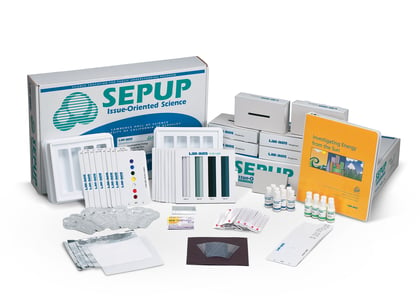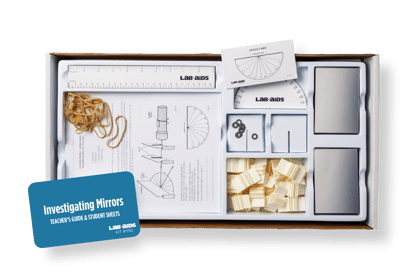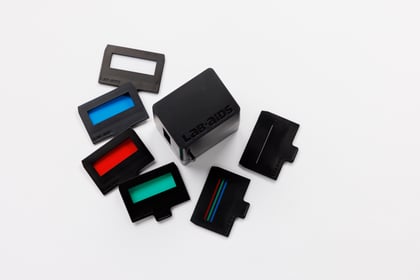Energy Transfer: Waves, Sound and Light

In this series of three activities students produce both longitudinal and transverse mechanical waves and compare their similarities and differences. As an introduction, students use water and springs to observe wavelength and frequency and discover the relationship between them. Their exploration of waves continues through investigating vibrations and the production of sound waves. Using an elasticized string allows students to create and observe different pitch notes and relate the sounds produced to the frequency of the vibrations. They then read about the wave nature of different energy forms, including light and sound, and are introduced to the fundamental features common to all waves. The reading compares and contrasts similarities and differences among different energy waves and explains how our eyes and ears interpret various wave forms.
Details at a Glance
- 3-5 Days | 3-5 ~50 minute class periods
- 3 Activities
- Accommodates unlimited classes, each with 6 groups of 4 students
- Meets our criteria for supporting literacy
- All materials are non-consumable
- Includes digital resources
Scientific Concepts
•Energy is a property of many substances and is associated with heat, light, electricity, mechanical motion, sound nuclei, and the nature of a chemical. Energy is transferred in many ways.
•The sun’s energy arrives as light with a range of wavelengths, consisting of visible light, infrared, and ultraviolet radiation.
•Waves, including sound and seismic waves, waves on water, and light waves have energy and can transfer energy when they interact with matter.
•Electromagnetic waves include radio waves (the longest wavelength) microwaves, infrared radiation (radiant heat), visible light, ultraviolet radiation, x-rays, and gamma rays.
Key Vocabulary: amplitude, longitudinal wave, sound, crest, low pitch, trough,
electromagnetic radiation, mechanical wave, visible spectrum, energy, photon, wave, frequency, transverse wave, wavelength, high pitch
Guides & Student Sheets
Our kits and modules provide you with everything you need so you can open, review, and teach the material confidently the next day.
- Comprehensive Teacher Guide with background information, detailed instruction, example data and answers
- Student Sheets with age appropriate background information, full procedure(s), and analysis items
- Materials necessary for the investigation (beyond common classroom items)
- Safety Data Sheets
Kit Components
- 6 Mini Wave Tanks, LAB-AIDS®
- 6 Spring
- 6 Elastic string with barbed ends
- 6 Plastic paddles
- 6 Rulers, 15-cm
- 1 Transparency 1: Wave Characteristics
- 1 Transparency 2: Comparing Wavelength
- 28 Student Worksheets and Guides
- 1 Teacher’s Guide



